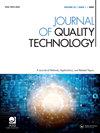数理统计
IF 2.2
2区 工程技术
Q2 ENGINEERING, INDUSTRIAL
引用次数: 0
摘要
作为同一作者的《概率论》一书的姊妹书,这本书应该是数理统计系列课程中的第二门课程。读者应该学过微积分,并完成了基于微积分的概率论课程。与大多数数理统计教科书一样,点估计、区间估计和假设检验是核心概念。这本书是专门为学生谁将有他们的第一次接触数理统计,所以作者精心选择了他的材料,并集中在统计的理解,如样本均值和样本方差也是随机变量。R在整个文本中用于图形,计算和蒙特卡罗模拟。作业很全面。从所有这些方面来看,这本书的风格与同一作者的另一本《概率论》相似。这本书的组织结构看似简单:只有四章。第一章,将近100页,是关于随机抽样的。第二章,也是100页,是关于点估计的。第3章,135页,是关于区间估计的。第四章,133页,是关于假设检验的。这种“简单”的结构使数理统计的四大支柱对第一次学习这个主题的读者来说非常清楚。在每一章中,就像在《概率论》一书中一样,每个概念都从多个方面进行了详细的介绍。当涉及计算时,保留了足够的中间步骤,以便读者可以轻松地遵循步骤。一个显著的例子是假设检验的呈现。与许多其他教科书从z检验等已证明的方法开始不同,这本书首先介绍了大图,而这个大图包括“预感”:它在一开始就提出了假设检验的12个步骤的清晰大纲,从“关于感兴趣的问题的预感或理论”开始,然后进入第二步“将理论转化为关于未知参数的问题”,然后“陈述”零假设。“…然后对其中许多步骤进行了详细的技术说明。第1类和第2类错误也与这12步大纲一起呈现。更重要的是,提出了奇怪的(即,特殊的)假设检验形式!故事涉及三兄弟,奇科、哈波和格劳乔。它们每个都有自己的检验统计量,例如x1 + x2, min (x1, x2)或max(x1, x2),其中x1和x2是来自均匀分布U(0, θ)的大小为2的随机样本。是1 / 4 5还是1 / 4 2?这是在影射三只小猪吗?尽管如此,这是一个非常有趣的例子,它非常有效地指导了假设检验的技术细节,但也复兴了这个“古老”的技术,告诉读者,在使用经过验证的假设检验方法时,我们实际上已经做出了选择(即,三兄弟的每个建议都有利弊,就第一类和第二类错误而言),并且总是有新的想法可能。本文章由计算机程序翻译,如有差异,请以英文原文为准。
Mathematical Statistics
As a sister book of the book Probability by the same author, this book is supposed to be the second course in a mathematical statistics sequence of classes. The readers should have learned calculus and completed a calculusbased course in probability. As with most mathematical statistics textbooks, point estimations, interval estimation, and hypothesis testing are the core concepts. This book is particularly written for students who would have their first exposure to mathematical statistics, so the author carefully selected his materials and had focused on the understanding of statistics such as the sample mean and sample variance being also random variables as well. R is used throughout the text for graphics, computation, and Monte Carlo simulation. The homework is comprehensive. From all these aspects, this book has a similar style as the other book of Probability by the same author. The book’s organization is deceptively simple: it only has four chapters. Chapter 1, almost 100 pages, is about random sampling. Chapter 2, another 100 pages, is about point estimation. Chapter 3, 135 pages, is about interval estimation. Chapter 4, 133 pages, is about hypothesis testing. This “simple” structure makes the four pillars of mathematical statistics very clear to readers who first learn the topic. Within each chapter, just like in the book Probability, each concept is presented in detail and in multiple aspects. And when calculation is involved, enough middle steps are preserved so readers can easily follow the steps. One notable example is the presentation of the hypothesis testing. Not like many other textbooks that start with proven methods such as the Z-test, this book introduces the big picture first, and this big picture includes “a hunch”: it presents in the very beginning a clear outline of the 12 steps for hypothesis testing, starts with “a hunch, or theory, concerning a problem of interest,” then moves to the second step “translate the theory into a question concerning an unknown parameter theta,” then “state the null hypothesis of theta.” ... Then technical explanation of many of these steps is given in detail. The type 1 and type 2 errors are also presented right along with this 12-step outline. What is more, strange (i.e., idiosyncratic) forms of hypothesis testing are presented! It concerns three brothers, Chico, Harpo, and Groucho. Each of them comes up with their own testing statistics, e.g., x1þ x2, min (x1, x2), or max(x1, x2), where x1 and x2 are random samples of size 2 from a uniform distribution U(0, theta). Is theta 1⁄4 5, or theta 1⁄4 2? Is this an allusion to the three little pigs? Nonetheless, this is a hilarious example that very effectively instructs the technical details of hypothesis testing, but also revives this “ancient” technique that tells readers that, in using the proven hypothesis testing methods, we actually have made choices (i.e., each of the three brothers’ proposals have pros and cons, in terms of the type 1 and type 2 errors), and there are always new ideas possible.
求助全文
通过发布文献求助,成功后即可免费获取论文全文。
去求助
来源期刊

Journal of Quality Technology
管理科学-工程:工业
CiteScore
5.20
自引率
4.00%
发文量
23
审稿时长
>12 weeks
期刊介绍:
The objective of Journal of Quality Technology is to contribute to the technical advancement of the field of quality technology by publishing papers that emphasize the practical applicability of new techniques, instructive examples of the operation of existing techniques and results of historical researches. Expository, review, and tutorial papers are also acceptable if they are written in a style suitable for practicing engineers.
Sample our Mathematics & Statistics journals, sign in here to start your FREE access for 14 days
 求助内容:
求助内容: 应助结果提醒方式:
应助结果提醒方式:


